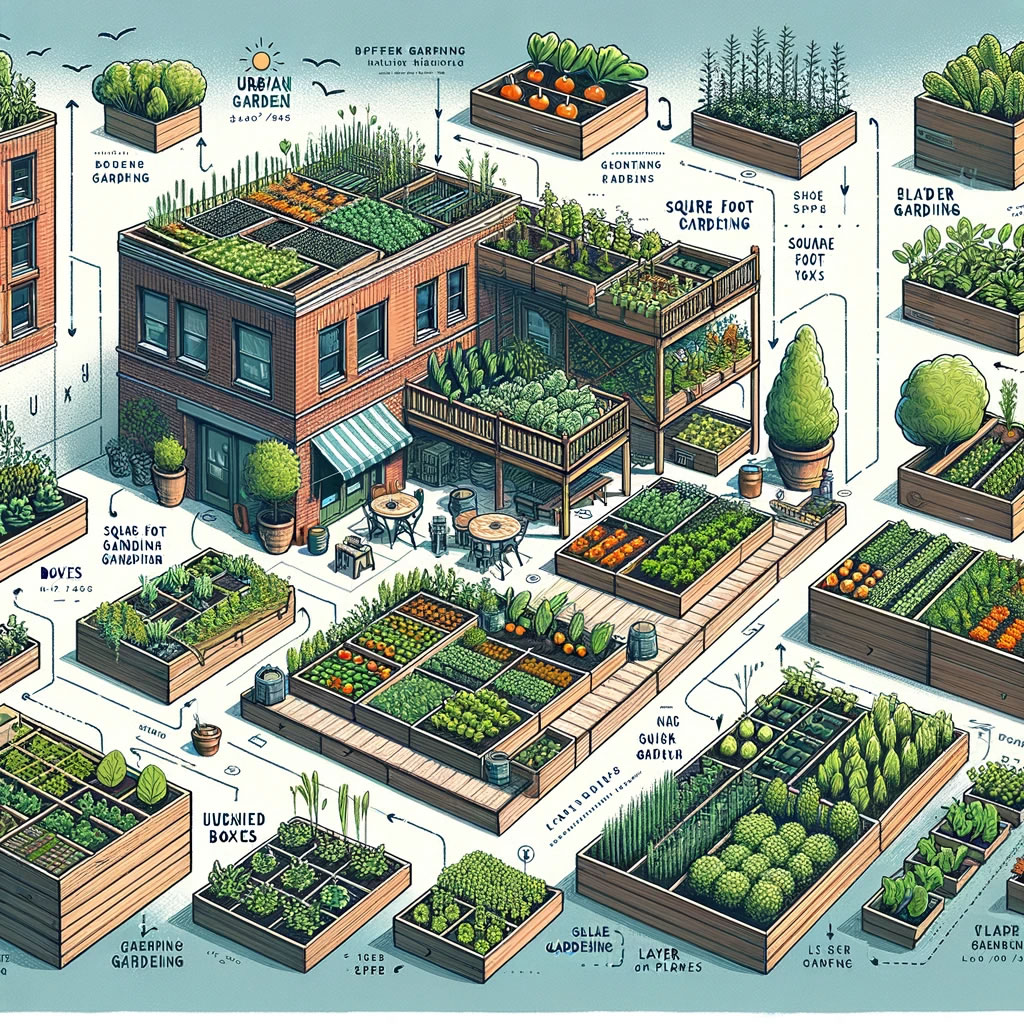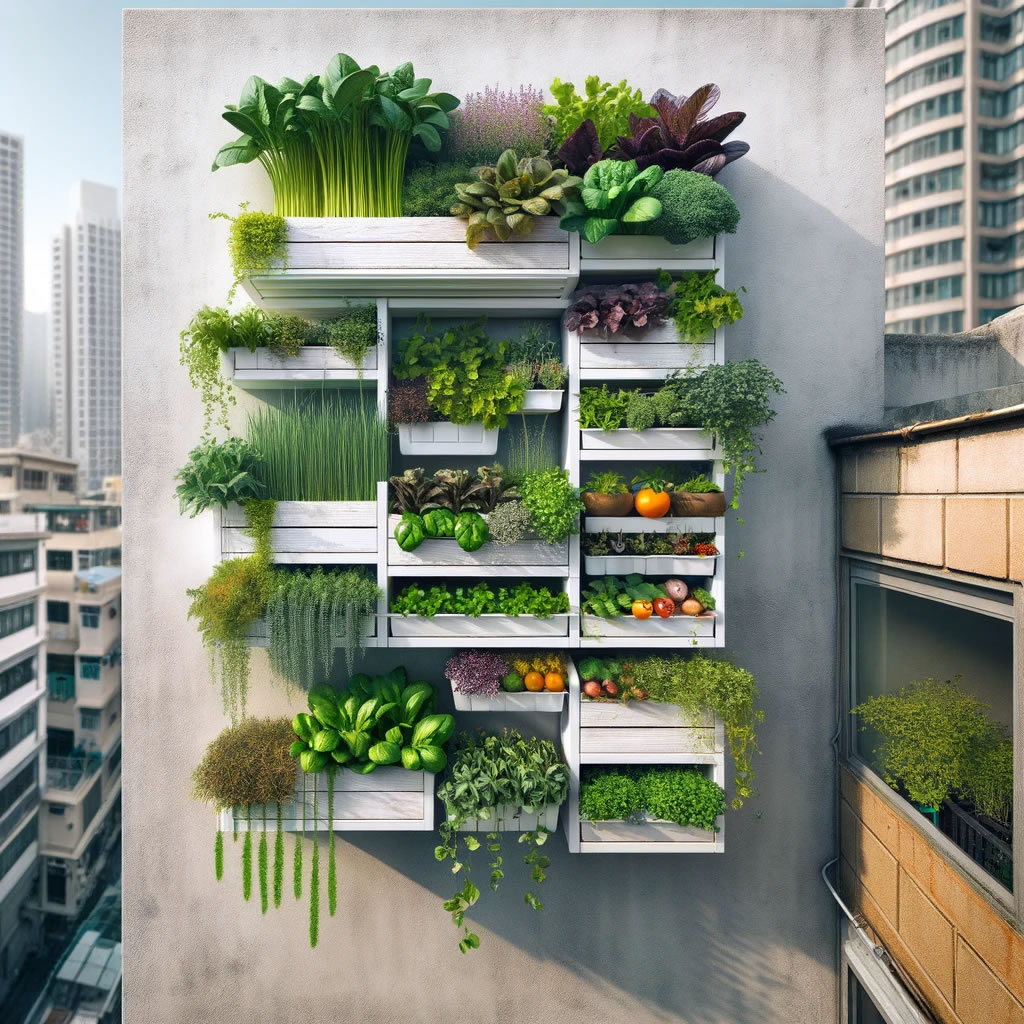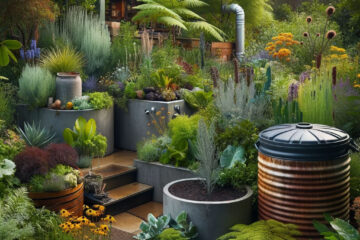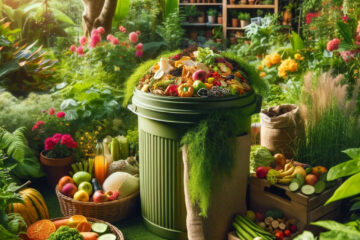Urban gardening has emerged as a beacon of greenery and sustainability in the concrete jungle of city life.
It’s a creative solution for city dwellers to engage in gardening, despite the challenges posed by limited space.
Whether it’s a small balcony, a rooftop, or a tiny backyard, urban gardening turns these spaces into thriving green spots.
This form of gardening not only beautifies urban areas but also contributes to environmental health and personal well-being.
Table of Contents

Accessibility and Versatility
Urban gardening is accessible to everyone, regardless of their living situation. It offers a versatile approach to gardening, allowing for a variety of plants, from decorative flowers to edible herbs and vegetables.
This adaptability makes it an ideal choice for urban environments.
Connecting with Nature
In the midst of urban settings, gardening provides a much-needed connection to nature. It’s a peaceful, grounding activity that reduces stress and enhances mental health.
Plus, it fosters a sense of community when shared with neighbors or through community gardens.
Sustainable Living
Urban gardening is more than a hobby; it’s a step towards sustainable living. Growing your own food reduces your carbon footprint, promotes local produce, and encourages a healthier lifestyle.
Urban gardening is not just about growing plants; it’s about cultivating a greener, healthier, and more sustainable way of living in urban environments.
Methods for Gardening in Limited Spaces

Gardening in small urban spaces requires creativity and smart planning.
The University of Maine Cooperative Extension article highlights several effective methods that maximize limited space while ensuring a productive garden.
Raised-Bed Gardening
This method involves creating elevated beds, which can be filled with high-quality soil.
Raised beds are ideal for poor drainage areas and can be built in various sizes to fit your space. They offer better control over soil quality and make it easier to manage weeds and pests.
Square Foot Gardening
A highly efficient form of raised-bed gardening, square foot gardening involves dividing the growing area into small square sections (typically 1×1 foot).
This method is great for managing different crops in a compact space and is particularly useful for beginners due to its simplicity and organization.
Layer Gardening
This approach involves creating layers of organic material directly over existing soil or grass, which eventually decompose into rich, fertile ground.
It’s an excellent method for areas with poor soil quality, as it improves soil health over time.
Each of these methods can be adapted to fit balconies, rooftops, or small backyards, making them versatile options for urban gardeners.
By choosing the right method for your space and needs, you can create a flourishing garden in even the smallest urban area.
Best Practices for Small-Space Gardening

Small-space gardening, as discussed in the University of Minnesota Extension article, requires a strategic approach to make the most out of limited areas.
Here are some best practices that can help urban gardeners create a thriving garden in a compact space
Choosing the Right Containers
If you’re gardening on a balcony or rooftop, containers are your best friends. Opt for containers that are deep enough to accommodate the roots of your chosen plants.
Use lightweight materials if you need to move them around for sunlight exposure.
Utilizing Vertical Space
When horizontal space is limited, think vertically.
Use hanging baskets, wall planters, or trellises to grow plants upwards. This not only saves space but also adds an aesthetic element to your garden.
Selecting Suitable Plants
Not all plants are suited for small spaces. Choose dwarf or compact varieties of vegetables and flowers that don’t require much room to grow
Herbs are also a great choice for small-space gardens due to their size and utility.
Efficient Watering Techniques
Efficient watering is crucial, especially for container gardens that dry out faster. Drip irrigation systems or self-watering containers can be very effective.
Also, mulching helps retain moisture and reduce water consumption.
Maximizing Sunlight
Position your plants to get the maximum benefit from available sunlight. If your space doesn’t receive enough natural light, consider using grow lights to supplement.
By following these practices, you can ensure that your small-space garden is not only manageable but also productive and beautiful.
Maximizing Your Space: Tips and Tricks

When gardening in small urban spaces, every inch counts. Drawing from the resources provided by Penn State Extension, here are some tips and tricks to help you maximize the potential of your limited gardening area
Interplanting and Companion Planting
Utilize the practice of interplanting by growing fast-maturing crops alongside slower-growing ones.
This ensures continuous productivity from your garden. Companion planting can also be beneficial, where certain plant combinations support each other’s growth and deter pests.
Seasonal Rotation
Make the most of your garden space by rotating crops according to the seasons.
Plant cool-season crops like lettuce and spinach in early spring and replace them with warm-season crops like tomatoes and peppers as the weather warms up.
Incorporate Edible and Ornamental Plants
Mix edible plants with ornamentals to create a garden that is both beautiful and functional.
Many herbs and vegetables, such as kale and chard, have decorative qualities that can enhance the visual appeal of your garden.
Use of Containers and Raised Beds
Containers and raised beds offer excellent control over soil quality and can be placed in areas that receive the best sunlight. They also prevent soil compaction and provide better drainage.
Smart Use of Space
Utilize balcony railings for hanging planters, use window boxes, and consider tiered plant stands to create multiple levels of growing space.
This approach not only saves floor space but also adds vertical interest to your garden.
By implementing these strategies, you can create a lush and productive garden even in the smallest of urban spaces, proving that limited space doesn’t have to limit your gardening aspirations.
Benefits and Challenges of Urban Gardening
Urban gardening offers numerous benefits, making it a rewarding endeavor for city dwellers.
However, it also comes with its own set of challenges that require thoughtful solutions. Understanding these can help you navigate urban gardening more effectively.
Benefits of Urban Gardening
Access to Fresh Produce
One of the most significant benefits is the ability to grow your own fruits, vegetables, and herbs, ensuring a supply of fresh and organic produce right at your doorstep.
Environmental Impact
Urban gardens contribute to biodiversity, help reduce urban heat islands, and improve air quality. They also offer an opportunity for composting, which reduces kitchen waste.
Mental and Physical Health
Gardening is a therapeutic activity that reduces stress and promotes physical exercise. It also fosters a sense of accomplishment and well-being.
Community Engagement
Urban gardens can create a sense of community, providing a space for neighbors to connect and share gardening tips and produce.
Challenges of Urban Gardening
Space Limitations
The most apparent challenge is the limited space available in urban settings. This requires creative use of space and choosing plants that can thrive in smaller areas.
Light Availability
Ensuring plants receive enough sunlight can be tricky in densely built areas. Gardeners may need to use reflective surfaces or grow lights to supplement natural light.
Water Management
Efficient water use is crucial, especially in container gardening. Setting up a proper drainage system and using water-conserving techniques are important.
Pollution and Safety
Urban environments can expose gardens to pollutants. It’s important to test soil for contaminants and use safe gardening practices to ensure the health of both plants and gardeners.
By addressing these challenges and leveraging the benefits, urban gardening can transform small spaces into lush, productive, and enjoyable green areas.
Front Questions for the Article
- How Can I Start an Urban Garden in a Small Space?
- Uncover practical tips and creative ideas for starting your own urban garden, even in the most compact of city spaces.
- What Are the Best Plants for Urban Gardening?
- Explore which plants thrive in urban environments and how to choose the right ones for your small-space garden.
- Can Urban Gardening Really Impact the Environment?
- Discover the environmental benefits of urban gardening, from improving air quality to promoting biodiversity in city landscapes.
- How Do I Overcome the Challenges of Limited Light and Space in Urban Gardening?
- Learn strategies to effectively manage common urban gardening challenges like limited sunlight and restricted growing areas.
- What Are the Health Benefits of Urban Gardening?
- Understand how urban gardening can contribute to both mental and physical well-being, and foster community connections.




[…] With the right setup, you can look forward to creating your own nutrient-rich compost for your garden. […]
[…] landscaping is a thoughtful process, but by incorporating these principles, you can create a garden that not only looks good but is also good for the […]
[…] Yes, many medicinal plants can be grown in pots, such as rosemary and basil. These herbs adapt well to container living, making them perfect for those with limited garden space. […]
[…] In conclusion, understanding hardy plants is crucial for creating a low-maintenance and thriving outdoor garden. […]
[…] following these effective cleaning techniques, you can eliminate Mold and moisture at home and create a healthier living space for you and your […]